In Western culinary culture, the kitchen knife is not only a tool in the hands of the chef, but also a medium for artistic creation. Each well-designed Western kitchen knife contains the designer’s deep understanding of culinary art and the relentless pursuit of practicality. This article will focus on the design and function of Western kitchen knives, in-depth discussion of their aesthetic value and special features, to bring you to appreciate the unique charm behind this cooking tool.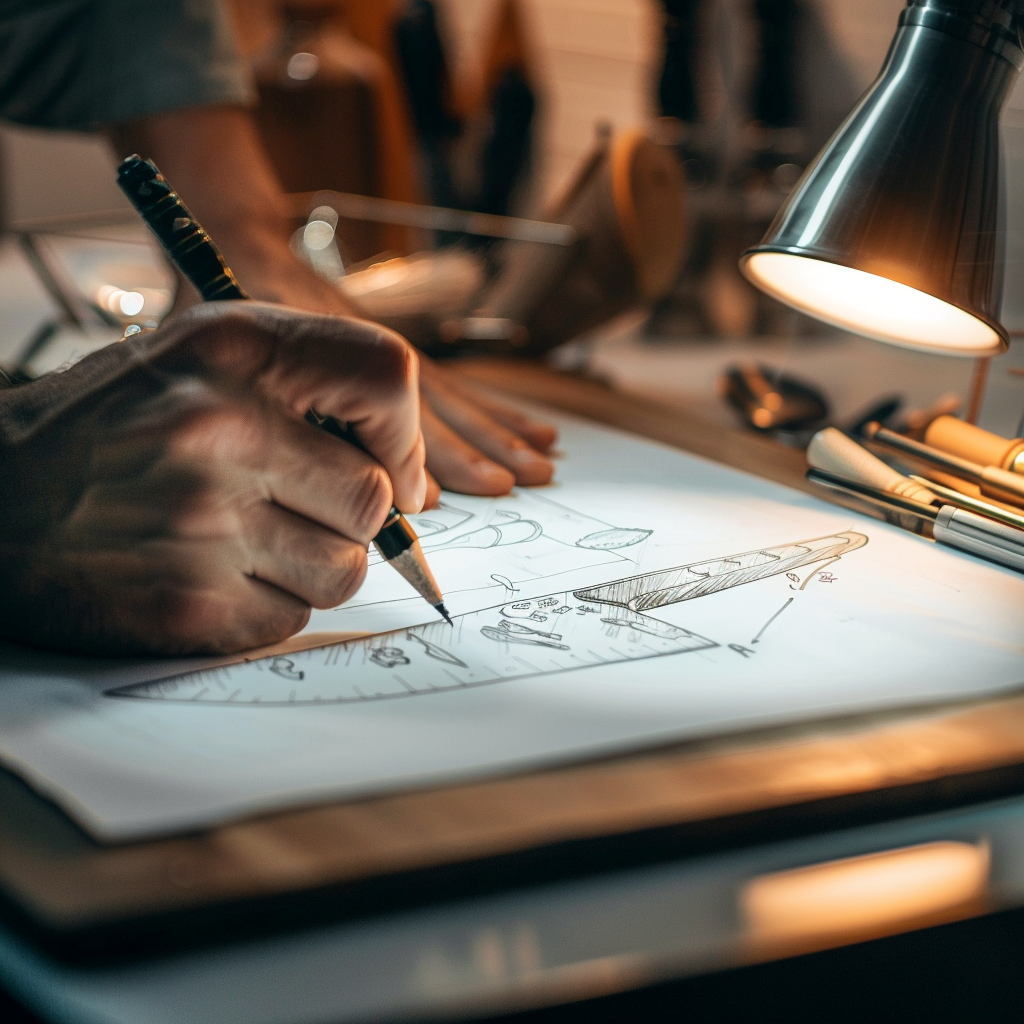
I. Design aesthetics: the perfect fusion of art and utility
The design aesthetics of Western kitchen knives is reflected in the perfect combination of form, material, colour and ergonomics. These elements together form a delicate picture, which not only meets the practical needs of cooking, but also shows a unique artistic aesthetic.
1. The beauty of shape
Western kitchen knives come in a variety of shapes and designs, but all of them embody simplicity and refinement. Chef’s Knife, as a ‘multi-faceted’ knife in the kitchen, has a wider blade with a curved edge, which is not only convenient for cutting meat and fish, but also easy to handle vegetables. This design not only improves cutting efficiency, but also makes the knife more visually smooth and harmonious. In addition, western kitchen knives often adopt one-piece handle design, the handle is closely connected with the knife body, which is both beautiful and firm, providing a stable hand feeling for the chef.
2. The beauty of material
Material is one of the most important factors in the beauty of a kitchen knife. High-quality Western kitchen knives are usually made of high-carbon steel, stainless steel or ceramic. High-carbon steel is highly regarded for its good hardness and sharpness, but need to pay attention to the rust treatment; stainless steel is widely welcomed for its corrosion resistance and easy maintenance; and ceramic knives have become the favourite of the high-end market for its super-hardness and unique texture. These materials are able to present an attractive sheen when exposed to light, adding a touch of colour to the kitchen.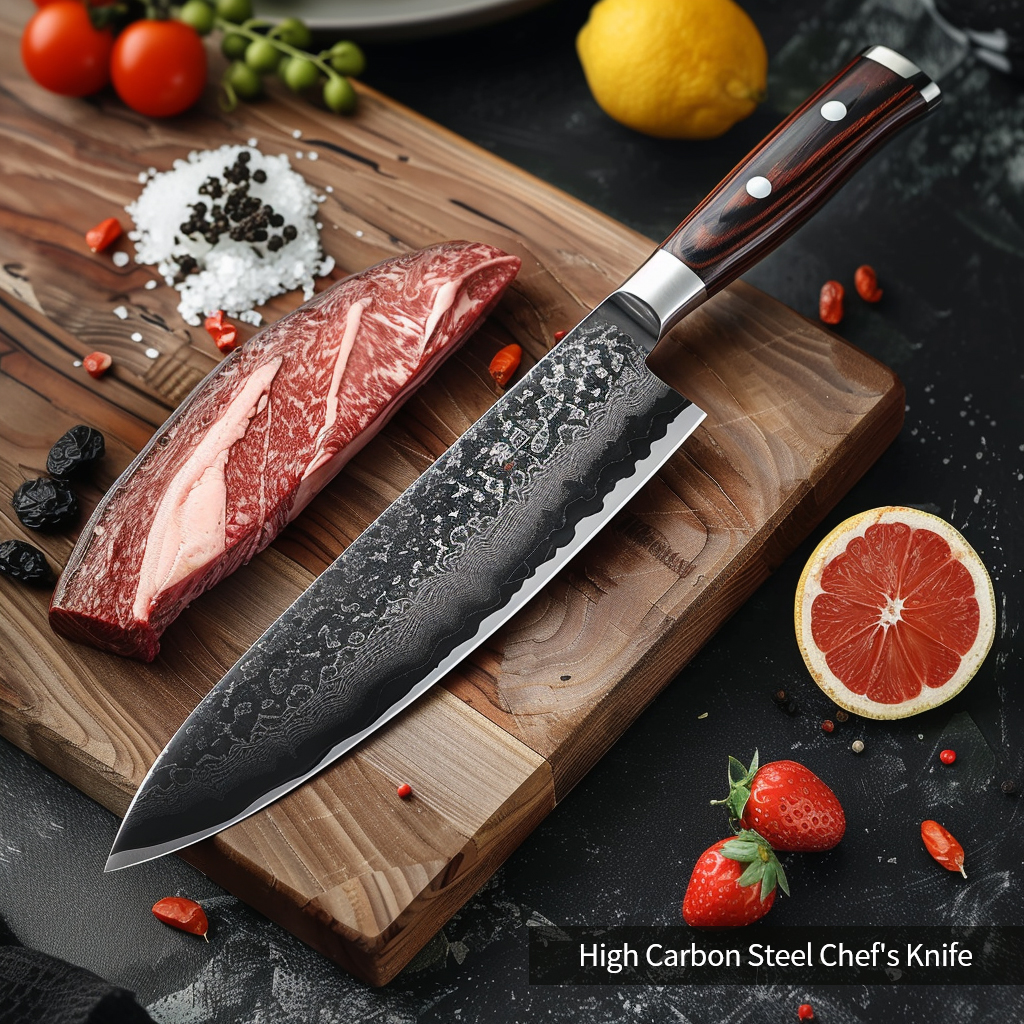
3. Colour and texture
Although Western kitchen knives are relatively conservative in terms of colour, with the primary colours of the metal dominating, some high-end brands add textures or patterns to their knives through special processes to add a sense of visual hierarchy and artistry. For example, Damascus steel kitchen knives are known for their unique patterns, making each knife a one-of-a-kind work of art. These textures and patterns are not only aesthetically pleasing, but also have a certain anti-slip function that enhances the safety of use.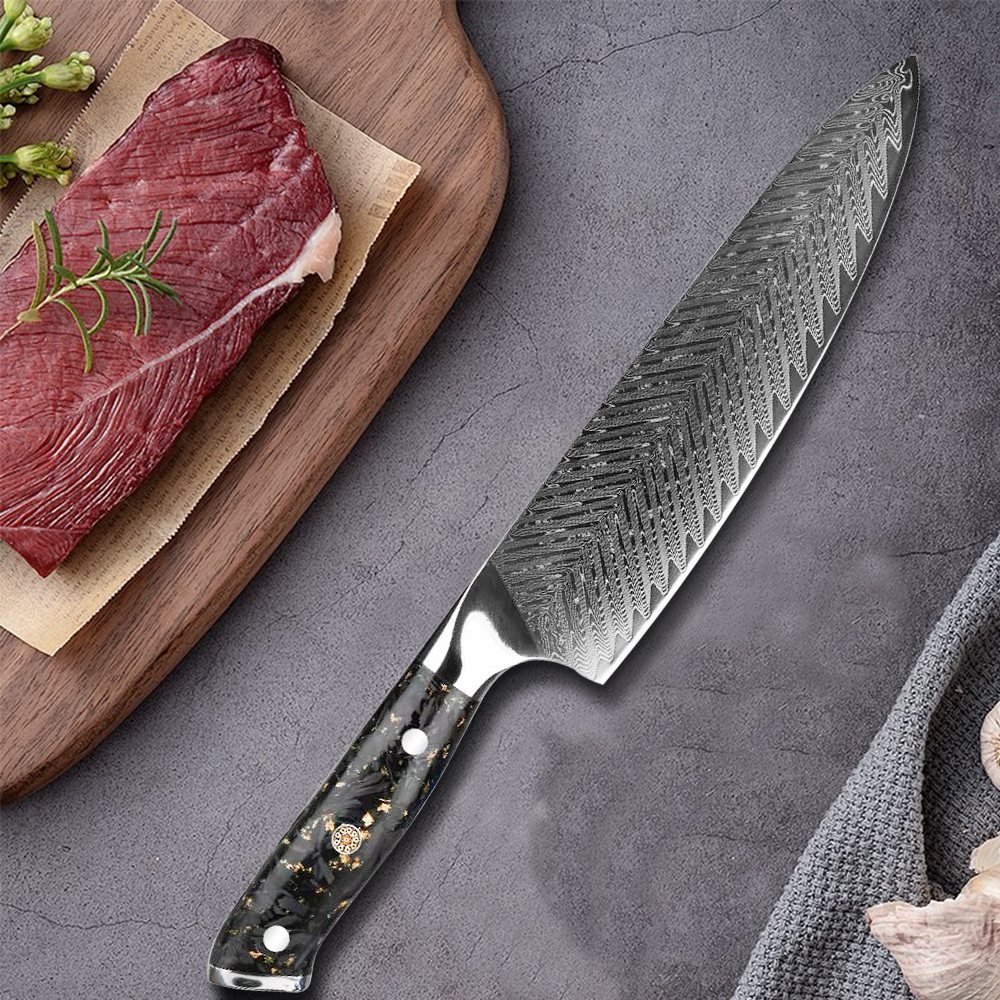
4. Ergonomic design
Ergonomic design is an important part of the aesthetics of Western kitchen knives. Designers in the design process fully consider the chef’s habits and hand structure characteristics, through the optimisation of the shape, size and material of the handle and other factors, so that the kitchen knife more ergonomic principles. This design not only reduces the cook’s fatigue when using it for a long time, but also improves the accuracy and efficiency of cutting. At the same time, the ergonomic design also gives the kitchen knife a warm and jade-like touch, so that the chef feels a kind of pleasure and comfort in the process of using.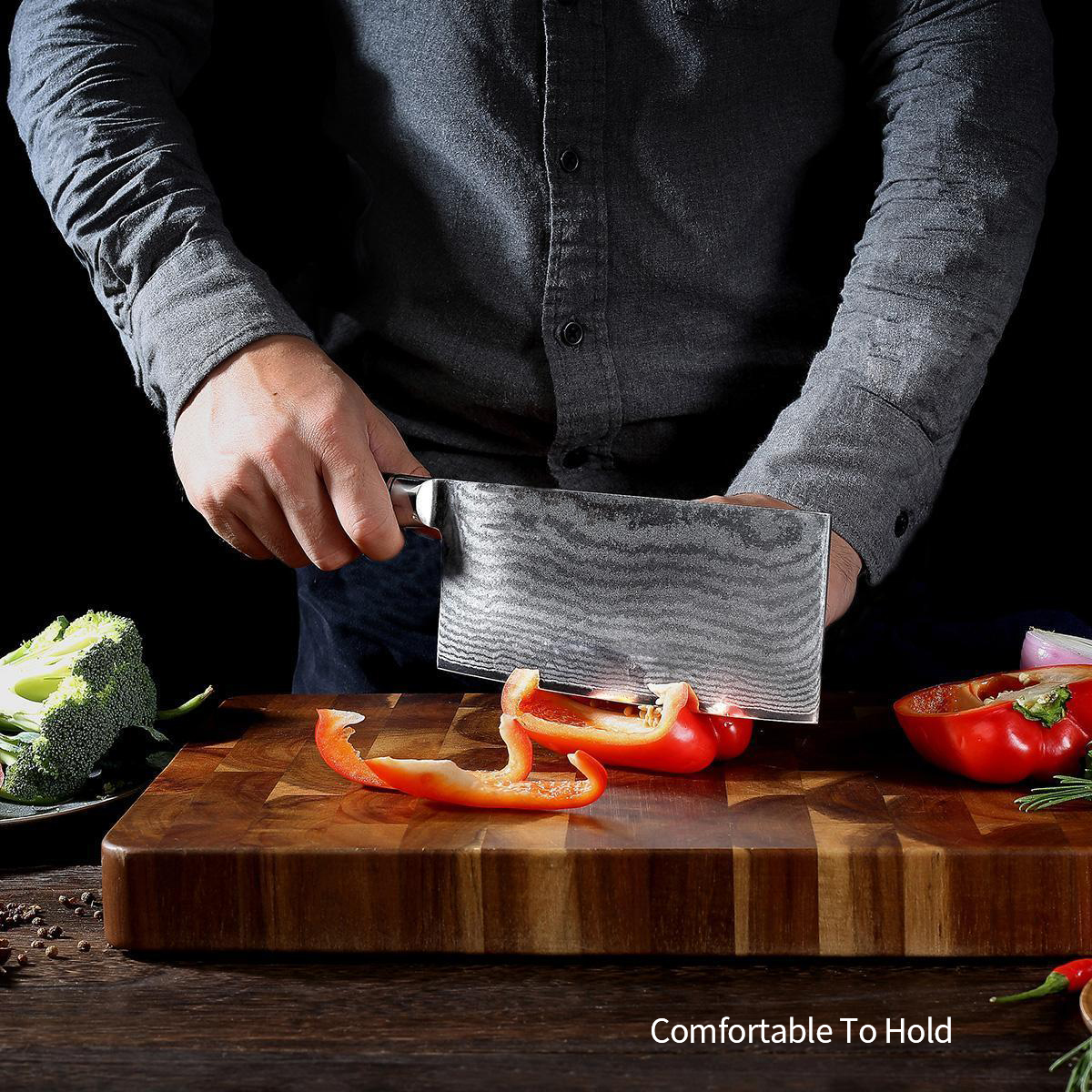
II. Analysis of special functions
1. Versatility
Western kitchen knives are known for their versatility. As an ‘all-rounder’ in the kitchen, the chef’s knife can cope with the cutting needs of various ingredients. Whether it’s cutting meat, fish, vegetables or fruit, a chef’s knife can do it all with ease. In addition, there are specially designed knives such as boning knives and bread knives, each with a unique and special function that meets the needs of different cooking scenarios. This versatility not only improves cooking efficiency, but also makes kitchen work easier and more convenient.
2. Cutting efficiency and precision
Western kitchen knives are designed with cutting efficiency and precision in mind. The wide and straight body and sharp blade of the chef’s knife make the cutting action more smooth and natural; the boning knife can accurately separate the bones and meat with its long and thin body and sharp tip; and the serrated blade of the bread knife can easily cut through bread and other food that is hard on the outside and soft on the inside. These designs not only improve the cutting efficiency but also ensure the precision of cutting, making the cutting of ingredients more perfect.
3. Safety
Safety is an important aspect of Western kitchen knife design that cannot be ignored. In order to ensure the safety of chefs in the process of use, Western kitchen knives in the design of the handle of the ergonomic design principles to make a more stable and comfortable to hold; at the same time, the surface of the handle is also added to the non-slip texture in order to prevent the hands from slipping; in addition, some high-end kitchen knives also use advanced blade processing technology such as rounded corners or non-slip coating to reduce the risk of accidental cuts. These designs not only improve the safety of kitchen knives but also make chefs feel more at ease during use.
4. Speciality knives
In addition to the common types of kitchen knives mentioned above, there are also many knives with special functions in the Western kitchen knife world, such as cheese knives, vegetable knives, pocket knives, и так далее. Cheese knives have a unique serrated edge. Cheese knife with its unique serrated blade can easily cut the hard cheese; vegetable knife with its small and lightweight body and sharp blade can easily deal with a variety of vegetables; small cutter with its sharp tip and flexible body can easily complete the fine cutting work. The emergence of these special function knives not only enriches the types of western kitchen knives but also makes the cooking work become more flexible and diverse.
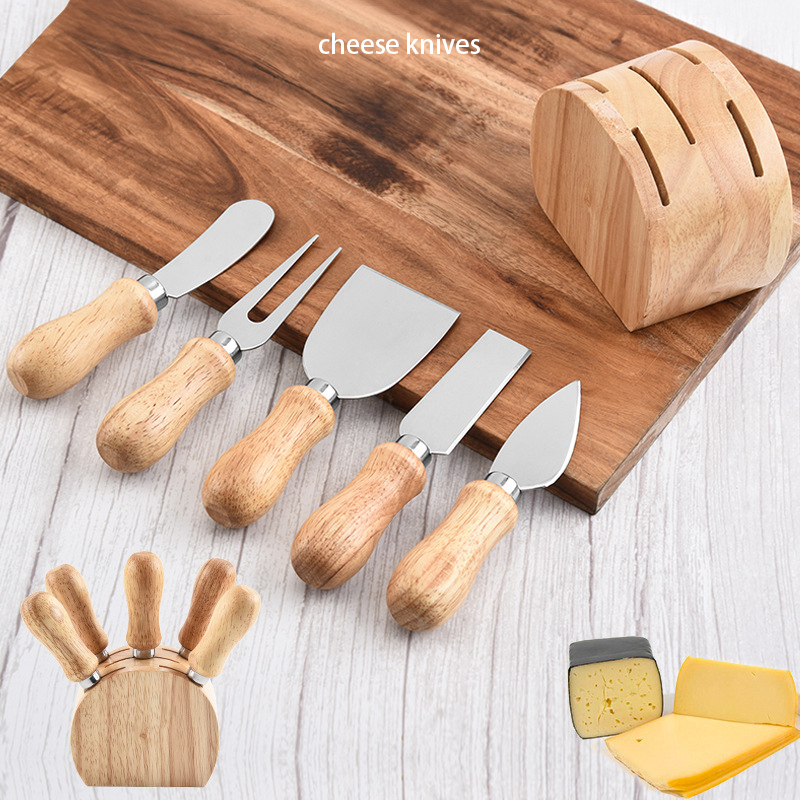
Third, the integration of design aesthetics and special functions
Western kitchen knife design aesthetics and special features do not exist in isolation but are integrated and mutually reinforcing. Designers in the design of kitchen knives not only pay attention to its appearance and material selection but also give full consideration to its practicality and functionality needs. By skilfully combining design aesthetics with specific functions, Western kitchen knives maintain their aesthetic appeal while delivering superior performance and quality. This integration not only enhances the value of kitchen knives, but also makes them a kind of enjoyment and artistic embodiment in the process of cooking.
Conclusion
In summary, western kitchen knives occupy a significant position in the culinary field with their unique design aesthetics and rich special functions. They are not only tools for cutting ingredients but also indispensable works of art in the hands of chefs. By exploring the design and function of Western kitchen knives, we can gain a fuller understanding of the appeal of this culinary tool, and better apply it to the real world of cooking. In the future, we have reason to believe that the Western kitchen knife will continue to innovate and improve, contributing to the development of the culinary arts.
 Янцзян Энтони Найвз Ко., Лтд
Янцзян Энтони Найвз Ко., Лтд